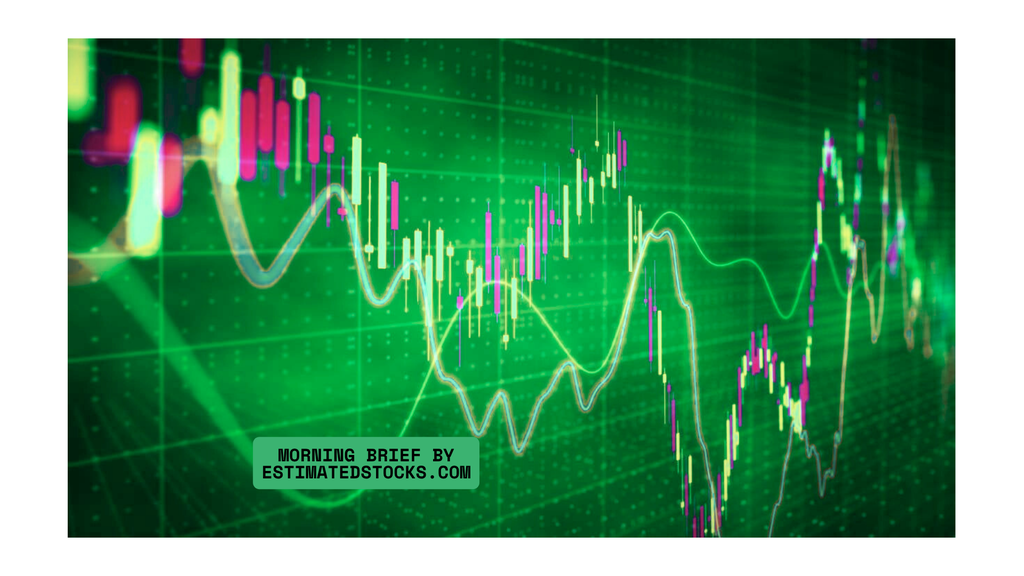
Explore the 2025 economic outlook—growth, risks, and investment strategies. Discover which sectors thrive and which struggle in this volatile market. 📊🚀
The Economy in 2025: A Roller Coaster of Hope and Fear 🌀
Buckle up, folks! The economic landscape is throwing mixed signals, and investors are left scratching their heads. Are we heading for a soft landing, a recession, or just a weird economic limbo? Let’s break it down with a blend of data, and hard reality.
Macro Trends: The Good, The Bad, and The Ugly
The Good 🌟:
- GDP Growth Holding Up: The economy is still expanding, albeit at a slower pace. Q4 GDP grew at 2.3%, down from 3.1%, but still positive.
- Job Market Resilience: Unemployment ticked down to 4%, with solid job additions in government and manufacturing. Jobless claims have also stabilized.
- Wage Growth 💸: Average hourly earnings rose 0.5% MoM and 4.1% YoY, meaning workers have more cash to spend.
- Manufacturing Revival?: ISM Manufacturing PMI climbed to 50.9, signaling expansion after months of contraction.
- Inflation Under Control (Mostly): Core PCE, the Fed’s favorite inflation gauge, is at 2.8% YoY—not ideal, but far from the nightmare of 2022.
The Bad 💩:
- Housing Market in the Doldrums: Housing starts fell 9.8%, and pending home sales plunged 5.5%. Rising mortgage rates near 7% aren’t helping.
- Retail Sales Take a Hit: January retail sales dropped 0.9%, showing that consumers might be tapping out.
- Trade Deficit Worsening: The goods trade deficit widened to $122 billion, fueled by a drop in exports and a surge in imports.
- Government Debt Explosion: The Federal balance sheet still hovers around $6.8 trillion, and the budget deficit keeps growing.
The Ugly 🤯:
- Consumer Sentiment is Tanking: Michigan Consumer Sentiment fell to 64.7, a sharp decline from 71.1. People aren’t feeling great about the economy.
- Debt Overload: Total household debt hit $18 trillion, raising concerns about financial stability.
- Corporate Earnings Pressure: With slowing demand and persistent labor costs, corporate profit margins could shrink.
Investing: Time to Buy or Time to Cry? 🤯
Sectors Poised to Outperform 💪:
- Energy ⚡: Oil inventories are rising, but strong global demand suggests continued gains.
- Industrials 👷: Infrastructure projects and government spending keep this sector strong.
- Healthcare 🏥: A defensive play in uncertain times, especially with an aging population.
- Tech (Selectively) 💻: AI and automation remain hot, but companies with weak balance sheets will struggle.
Sectors at Risk ⚡️:
- Real Estate 🏠: High mortgage rates are slamming the housing market.
- Retail 🛋️: Consumers are pulling back on spending, especially on discretionary goods.
- Financials 📈: Banks are under pressure as lending slows and defaults rise.
Biggest Risks Ahead 🤯
- Stagflation Risk: If growth slows while inflation remains sticky, it’s a nightmare scenario for markets.
- Fed Policy Uncertainty: The Fed is walking a tightrope. Will they cut rates later this year, or will inflation force them to stay hawkish?
- Geopolitical Tensions: Any major international crisis (Taiwan, Middle East, Russia-Ukraine) could send markets into turmoil.
- Debt Overhang: Rising consumer and government debt could choke growth if borrowing costs stay high.
Final Take: What Should Investors Do?
- Stay Defensive: Hold strong balance-sheet stocks in healthcare, energy, and industrials.
- Avoid Overleveraged Companies: Rising rates are a killer for debt-heavy firms.
- Diversify: Keep exposure to commodities, bonds, and cash for flexibility.
- Be Ready to Pounce: If a market correction comes, it’s an opportunity to buy quality assets on the cheap.
This market is like a seesaw—sometimes up, sometimes down, and often leaving investors nauseous. But with the right positioning, you can ride the waves instead of getting wiped out. 🏄♂️
Disclaimer:
The information provided in this article is for educational purposes only and should not be construed as investment advice. estima...
Author
Shaik K is an expert in financial markets, a seasoned trader, and investor with over two decades of experience. As the CEO of a leading fintech company, he has a proven track record in financial products research and developing technology-driven solutions. His extensive knowledge of market dynamics and innovative strategies positions him at the forefront of the fintech industry, driving growth and innovation in financial services.


